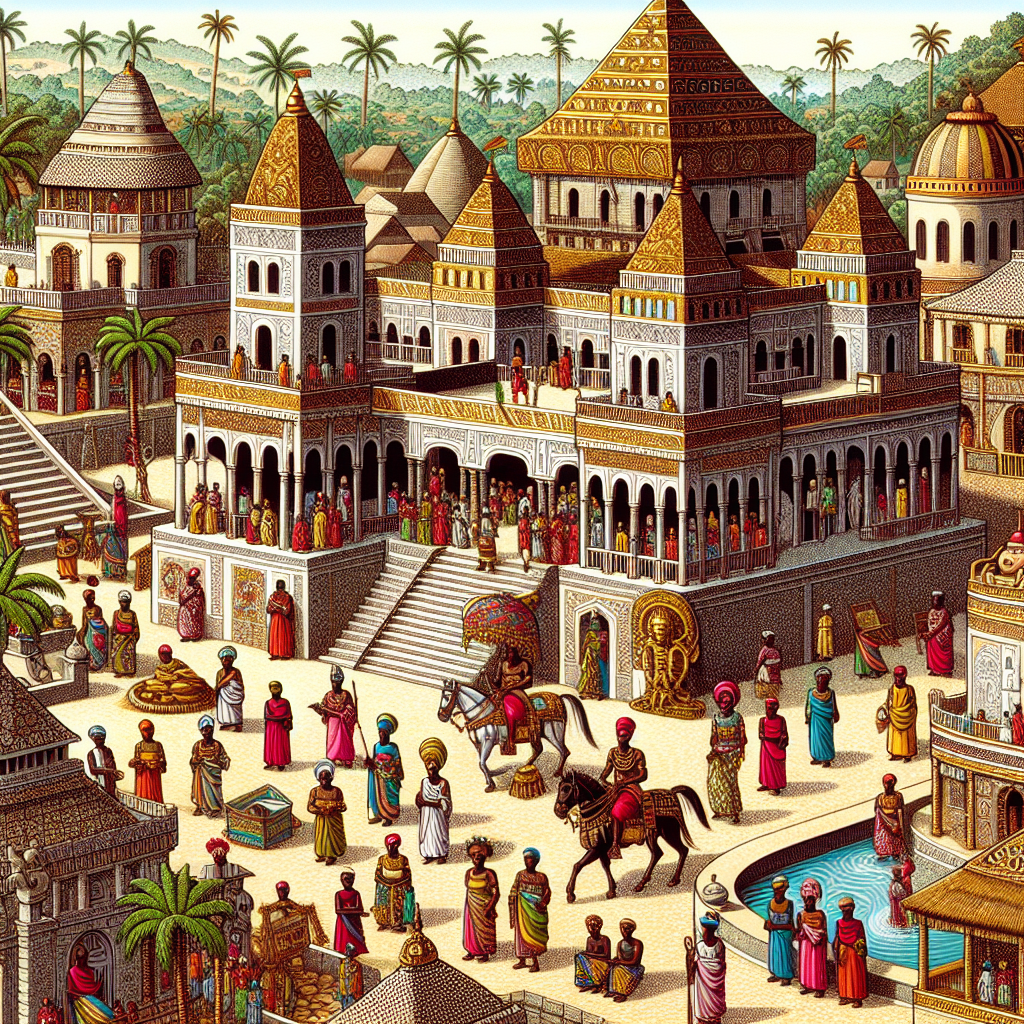Unearthing the Kingdom of Benin: Africa’s Unsung Artistic Marvels
Kingdom of Benin: A Marvel Among Empires
Here we go, folks! Let’s roll back the clock to the 11th century, where the Kingdom of Benin was not just “thriving” — it was absolutely killing it! Tucked away in modern-day Nigeria, this kingdom wasn’t just putting up grocery stores and gas stations; oh no, it was a sophisticated empire that boasted governance and wealth like a pro. The Edo people knew what they were doing, creating a vibrant stronghold that was the envy of empires far and wide.
And let’s not even get started on their kings—the Obas—who were basically the rock stars of their time. Take Oba Ewuare the Great, for example. He unified the region like a master tactician while also running a show that was all about art, culture, and yes, a fair bit of trade. Talk about a multi-hyphenate! While European empires were busy looting and pillaging, Benin was sitting pretty, serving as a beacon of excellence in pre-colonial Africa.
Art That Speaks Volumes
Let’s pivot to the art scene—the real popcorn-worthy part of the Kingdom of Benin. This wasn’t just some “paint by numbers” nonsense; the craftsmanship was next-level! The Benin Bronzes? You better believe they were more than just bling! With stunning plaques and sculptures that captured royal life and epic historical moments, it was like a Netflix series in bronze—fully detailed with suspense and drama.
Then there were the ivory carvings and ornamental wooden sculptures—mascara-wearing masks and all. Each piece wasn’t just pretty; they were steeped in cultural weight, serving as documentation of history and worship. So if you thought art was just for galleries, think again! In Benin, it was a whole life manual.
The Benin Bronzes: Caution, Colonial Drama Ahead!
Now, let’s talk about the infamous Benin Bronzes—the true rock stars of the art world. Once gracing the royal palace, these artifacts are more than mere collectibles; they’re vivid narratives of heritage and leadership. But hold on to your hats, because the British decided to crash the party in 1897 with their so-called “Punitive Expedition.” Spoiler alert: It was a disaster for the kingdom and a windfall for Western museums, who decided to adopt these treasures like the world’s most unwanted houseguests.
These bronzes aren’t just antiques; they scream stories of colonial theft and cultural restitution. As we navigate the complexities of reclaiming our history, every conversation about the Benin Bronzes is like opening Pandora’s box on colonial injustices and the vital need for recognition and reparations.
The Art and Identity That Refuse to Die
Fast forward to today, and guess what? The legacy of the Kingdom of Benin lives on, like that catchy tune from your childhood. Contemporary African artists are dipping into this rich well of aesthetics and spirituality, creating an art revolution! Various initiatives are rising up from the ashes of colonial neglect, championing the importance of understanding this iconic kingdom’s past and its cultural contributions. Spoiler alert: Ignoring this history is not an option!
When communities come together to celebrate their roots, they’re not just having a good time; they’re laying the groundwork for appreciation and understanding. Who knew that reclaiming lost cultures could also be so fun?
Modern Benin: From Ruins to Renaissance
As we strut into modernity, Benin is basking in a cultural revival that’s as uplifting as a Sunday sermon. Museums and cultural hubs are pouring passion into showcasing their artistic legacy. They’re hosting exhibitions that pay homage to kings and craftsmen, reminding everyone what real artistry looks like. Local festivals and workshops are all the rage, making sure that the spirit of the Kingdom of Benin isn’t just a historical footnote but a vibrant, pulse-racing celebration.
Let’s Not Forget!
The Kingdom of Benin isn’t just a dot on a historical map; it’s an emblem of innovation, resilience, and unapologetic cultural richness. Let’s make sure we’re honoring this heritage, demanding attention and respect for the profound artistic narratives that need to be told. Waking up to the stories of civilizations that were deliberately downplayed isn’t just an act of justice; it’s a joyful remembrance of where we’ve come from—and a promise that those roots will flower into an empowering future.
If you’re keen on diving deeper into the dazzling world of the Kingdom of Benin, don’t just skim the surface—immerse yourself! There’s a treasure trove of resources that document this artistic heritage. So hit the books, watch some documentaries, and support the movements that keep the culture alive. Because if we don’t hold these narratives close, who will? And trust us—there’s nothing boring about reclaiming your heritage.



0 Comments